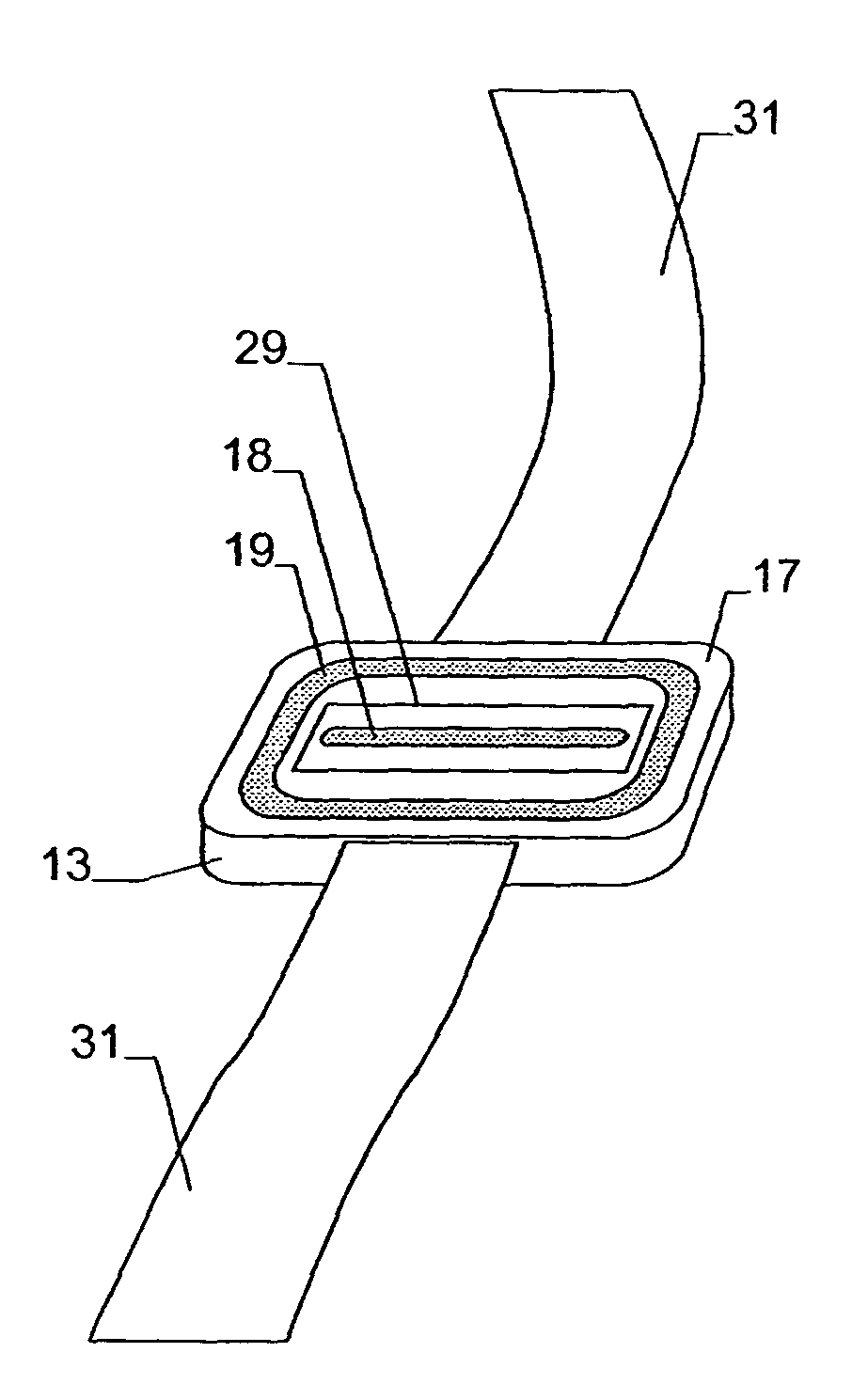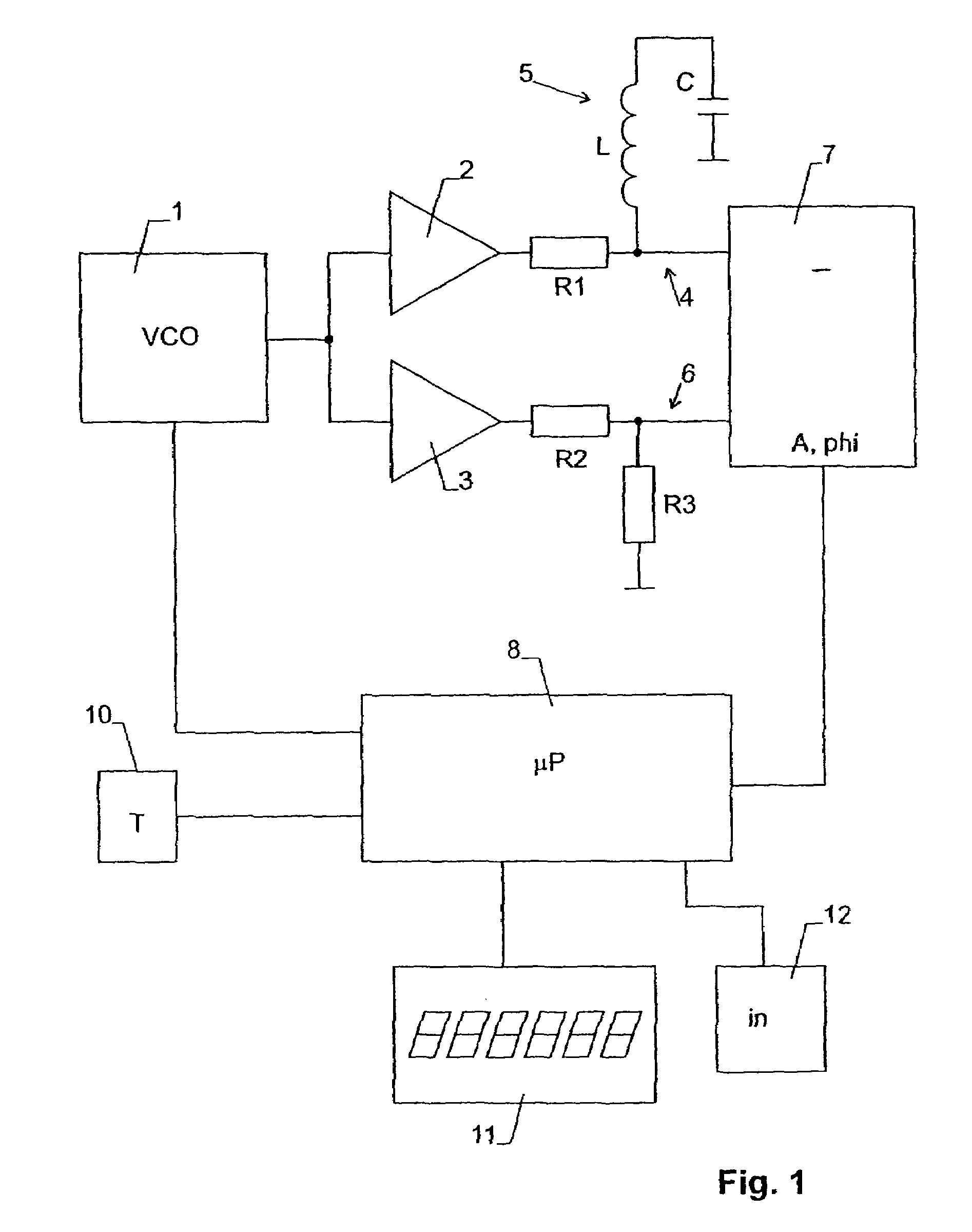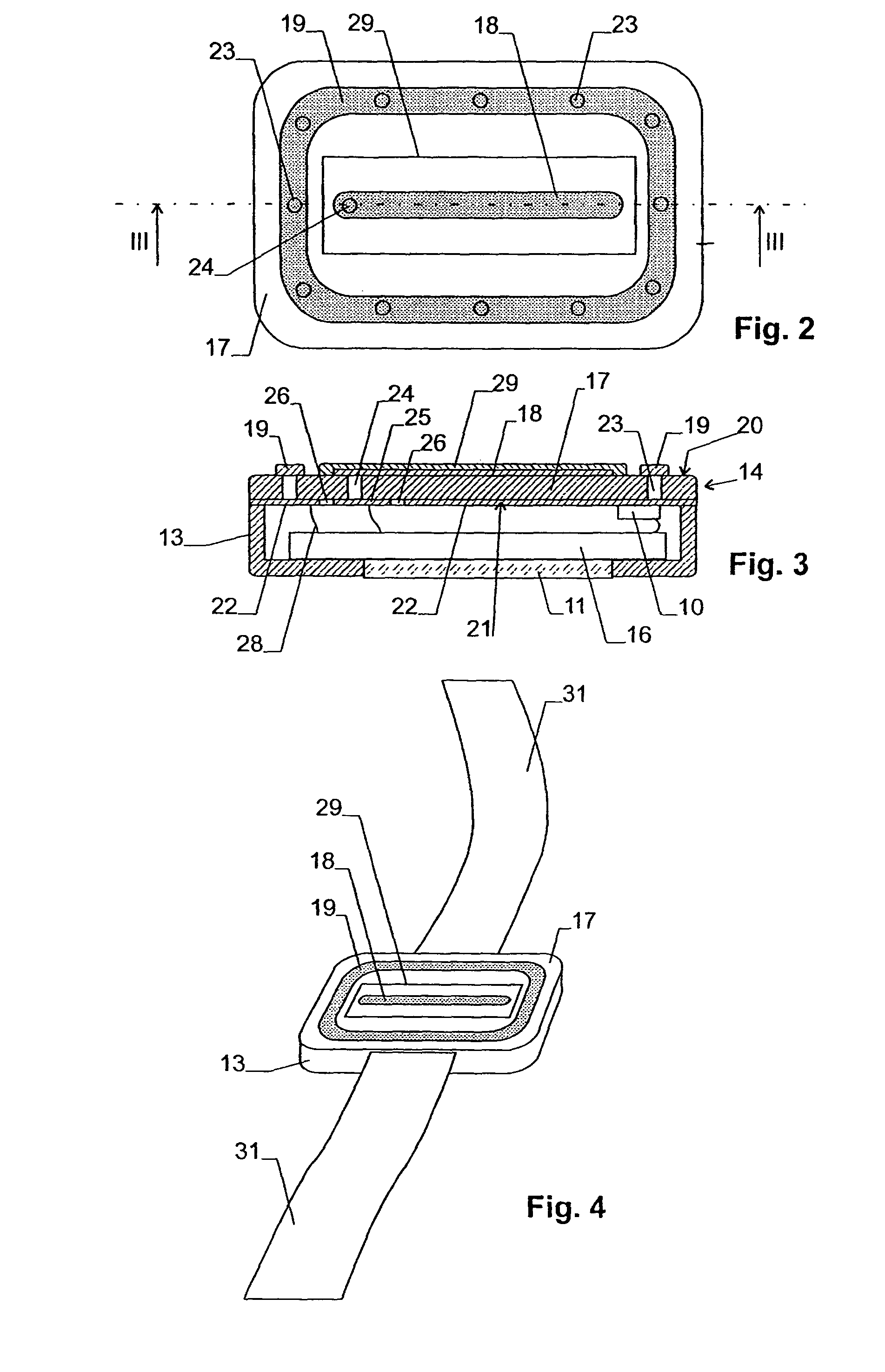Impedance spectroscopy based systems and methods
a technology of impedance spectroscopy and system and method, applied in the direction of material analysis using microwave means, biochemistry apparatus and processes, sensors, etc., can solve the problem of limited resolution in the measurement of blood level glucose concentration, and achieve the effect of large interaction length and high accuracy measuremen
- Summary
- Abstract
- Description
- Claims
- Application Information
AI Technical Summary
Benefits of technology
Problems solved by technology
Method used
Image
Examples
first example application
Measurement, e.g., In Vivo Measurement, of a Substance, e.g., Glucose, in a Body Liquid, e.g., Blood
[0050]The specific conductivity ρ(f) and the dielectric constant ε(f) for a given fluid vary depending on the type of fluid. For example, it is presently believed that the specific impedance of at least some body fluids (i.e. the specific conductivity ρ(f) and the di-electric constant ε(f)) in a frequency range between 10 MHz and 2000 MHz, more particularly between 20 MHz and 70 MHz and most particularly between 38 MHz and 58 MHz, is a function of the properties and concentration of the salty (ionic) components of the human body, related to variations in blood glucose. These salty components primarily include solvated sodium, potassium, calcium and other minor ions and their counter ions, the primary counter ion being chloride.
[0051]In one embodiment of the invention, only amplitude A0 is measured as a parameter for the determination of the concentration of the substance. Suitable cal...
second example application
Monitoring Concentrations of Substances During Biochemical Processes
[0073]Another aspect of the invention is directed to using the above-described device in other medical and / or biochemical applications, such as monitoring the concentrations of substances that can change electrical properties of the target such as sodium during biochemical processes. Biochemical processing is essential to many food, chemical, and pharmaceutical industries. At least one embodiment of the invention is directed to an application of the above-described device that is suitable for serving as a measuring device for defined levels of a substance in a liquid during a biochemical process in a bioreactor.
[0074]One example of a biochemical process for which the invention may be used is in connection with a fermenter. Fermentation is one typical biochemical process that may be used in the production of products such as organic acids or dairy products. The fermenter is an important part of an ethanol production ...
third example application
Detecting changes in Body Tissue
[0080]Inflammatory processes in the body have a characteristic impact on the impedance pattern of living tissue (in both humans and animals). Thus, in at least one embodiment, the devices and methods of the invention may be applied to diagnose changes in tissue, such as those resulting from inflammatory processes in the body, cancer, and edemas.
[0081]Edemas are accumulations of water in tissues (although water in cells and serous cavities also may be considered to be edemas as well). These accumulations of water show a significantly different impedance pattern compared to that of healthy tissue. Using devices and methods such as those described herein, at least superficial edemas could be discriminated from normal tissue, in a non-invasive, quick, inexpensive, and relatively pain-free manner.
[0082]Thus, one can use an embodiment of a device according to the invention to detect edemas by sizing the housing and the electrodes to fit over the area of the...
PUM
| Property | Measurement | Unit |
|---|---|---|
| frequency | aaaaa | aaaaa |
| frequency | aaaaa | aaaaa |
| inductance | aaaaa | aaaaa |
Abstract
Description
Claims
Application Information
 Login to View More
Login to View More - R&D
- Intellectual Property
- Life Sciences
- Materials
- Tech Scout
- Unparalleled Data Quality
- Higher Quality Content
- 60% Fewer Hallucinations
Browse by: Latest US Patents, China's latest patents, Technical Efficacy Thesaurus, Application Domain, Technology Topic, Popular Technical Reports.
© 2025 PatSnap. All rights reserved.Legal|Privacy policy|Modern Slavery Act Transparency Statement|Sitemap|About US| Contact US: help@patsnap.com



